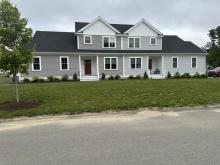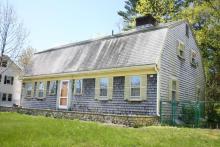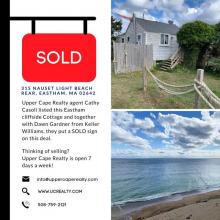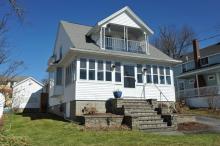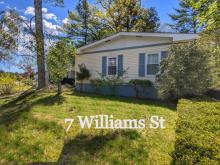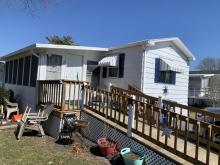A primer on Wareham's new school building project
To the Editor:
Residents of Wareham are quickly approaching a critical decision. A milestone that will shape the future of Wareham’s youngest citizens, potentially for decades to come. After numerous annual grant applications to the Massachusetts State Building Authority (“MSBA”) Wareham’s Minot Forest building was eventually selected out of a pool of more than 150 applicants across the State and was invited into the State’s school construction program with a reimbursement rate covering 74.98% of eligible project costs. Not only did the MSBA invite Minot Forest into the program, but the Authority also offered Wareham a rare opportunity to consolidate both elementary schools into one modern, economical, and efficient building, an option which was certain to provide savings for both Wareham and the MSBA in the long run. Although the MSBA’s funding agreement included some items which are either capped or categorically ineligible for reimbursement under the State guidelines, this opportunity still translated to an estimated State grant amount of roughly $50M to offset Wareham’s cost of such a large undertaking. However, this incredible opportunity did come with conditions; first and foremost, any proposed project must satisfy the District’s Educational Program in order to be eligible for State funding. As part of the MSBA process, Wareham’s Educational Program must be reviewed and approved by officials from the Department of Elementary and Secondary Education (“DESE”) and the MSBA to ensure that the proposed project is on par with current educational standards in Massachusetts.
Since that time, and as a result of hundreds of hours expended by more than two-dozen Wareham School Building Committee volunteers, the MSBA sanctioned Feasibility Study has concluded that Wareham’s Minot Forest and Decas Elementary school buildings have reached the end of their serviceable lifespan. The exhaustive study revealed that necessary improvements to each building would include extensive abatement, structural, electrical, mechanical, plumbing, exterior envelope (insulation, air/vapor barrier, roof, walls, windows) and accessibility upgrades in order to satisfy current building, energy and accessibility codes. Even if the existing buildings were to be brought up to current standards, the small building sizes, inefficient layouts, and restrictive footprints would necessitate more overall floor area in order to support the approved educational program, area which simply is not available within the confines of the existing building walls. The final cost to renovate Minot now and Decas in the following years was estimated at $74M by two independent professional estimating firms, and would still result in overcrowded buildings falling 20,000 square feet short of the State’s school space guidelines for the number of students enrolled.
Next, addition/renovation options were studied at each location and it was quickly determined that a project of this nature could indeed be completed in a manner which would satisfy the Educational Program, thereby securing State funding. However, further study revealed that the costs of such an undertaking rivaled that of most new construction projects in the MSBA’s capital pipeline. Furthermore, the end product still resulted in a large, fragmentary building with undesirable courtyards necessary to pull in natural light and a complex, inefficient, sprawling floorplan. The end product would be larger than a new construction option as well, the result of building upon the existing inefficient layouts. This larger building size would inevitably mean increased long-term annual operating costs for items such as maintenance and utilities, placing undue stress on Wareham’s annual operating budget. Ultimately, it was decided that while an addition-renovation project would result in a vastly improved learning environment over current conditions, it may not be the most economical option available to the Town.
Having exhausted repair and addition/renovation alternatives, the School Building Committee began to investigate other options. Two and three-story new construction alternatives were studied at various sites all over Wareham, including the High/Middle School track, Charge Pond Road, Decas and Minot, among many others. Advantages of each site were weighed and discussed at length, taking into consideration the intricacies of the MSBA’s reimbursement program and items which would be deemed ineligible for reimbursement (land acquisition, septic systems, well water, soil contaminants, structural fill material, demolition & abatement restrictions, etc.) and what that would mean for Wareham’s bottom line. MSBA guidelines do allow for reimbursement of abatement and demolition costs, but only on the site where a new school is built. If Wareham were to build on the Decas site; demolition and abatement costs of Minot would fall 100% on the Town, and the opposite held true as well. The Decas site’s higher commercial real estate value, a result of its proximity to rapid development in the area and immediate adjacency to active rail lines, meant that Decas could likely be sold “as-is” with the building still standing on the site, a multi-million dollar cost savings in favor of the Minot Forest site. The Minot Forest site was also quite a bit larger than the Decas site, closer to the center of Town, further away from the rapid commercial development and away from the increasingly utilized Cape Cod rail lines. Cost estimates performed across all sites studied concluded that constructing a new consolidated building on the Minot Forest site would be most economical for the residents of Wareham and provide much needed long-term operational cost savings for years to come.
The School Building Committee’s findings and recommendation were compiled and formally issued to the State for their review and approval in May of 2018. The estimated total project cost of a new consolidated building on the Minot Forest site as submitted was under $91M and Wareham’s anticipated share of that was estimated to be under $40M. The budget presented included everything necessary for a “move-in-ready” building, including moving costs, furniture, equipment, technology and appropriate project contingencies. On June 27th, 2018, the MSBA Board of Directors voted unanimously in support of Wareham’s preferred solution, and authorized the Committee to begin work on the project’s Schematic Design. Since that time, further development of the schematic level project scope and budget has continued, and most recent project estimates remain in alignment with the May 2018 feasibility phase budget.
At this point in time, two critical and imminent local approvals are necessary to move the project forward; (1) Approval at the October 22, 2018 Town Meeting giving permission to the Town to borrow and appropriate the funds necessary to construct the building; and (2) Majority approval of the November 6, 2018 State Election ballot question #4, in favor of a debt exclusion to be in place only for the time necessary to re-pay the loan. Should Wareham’s voters elect to move forward with the project, development of construction documents would continue through the end of 2019, followed by a construction period of approximately twenty months and a target new school opening for the Fall 2021 school year. However, if the proposed project fails to receive local funding authorization within 120 days of MSBA approval, Wareham would be removed from the MSBA capital pipeline and the approximately $50M of State assistance offered to Wareham would then be allocated to one of the other 150+ funding applicants.
To find out more about the project please visit http://newschool.warehamps.org/ or follow along with “Wareham Elementary School Building Project” on Facebook.
Sincerely,
Wareham’s School Building Committee (J. Andrews, J. Bacchiocchi, J. Caporiccio, M. Clements, B. Chandler, D. Decas, J. DeGrace, J. Duff-Gleason, D. Heard, M. Houdlette, M. MacMillan, N. Melim, D. Menard, M. Montrond, B. Pigeon, R. Pratt, D. Riquinha, A. Schwamb, J. Seamans, K. Shaver-Hood, D. Sullivan, G. Swett, P. Tropeano, R. Veugen, J. Wiksten, S. Wirtes)






